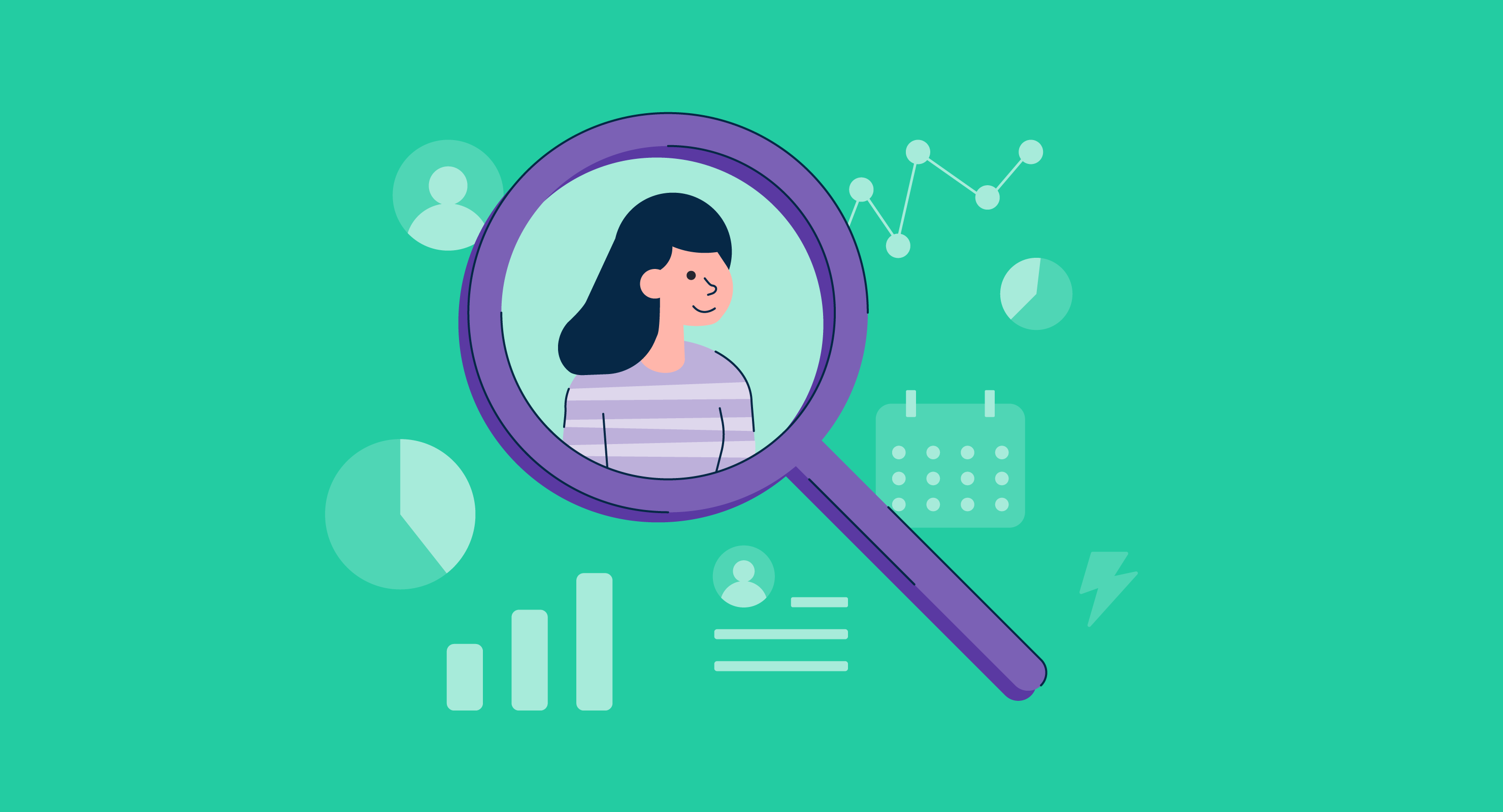What is people analytics?
People analytics is a method of using employee data to accelerate progress toward a company’s goals. Although it’s sometimes called human resources (HR) analytics, people analytics is a broader term that also calls on data from other departments, like finance and marketing.
Through people analytics, companies learn more about workers’ day-to-day processes, responsibilities, and outcomes. They then use this information to improve systems to cut costs or boost revenue.
HR analytics software can help a company track and analyze human resources data, such as demographics, training, and compensation. These platforms can lead to better employee engagement techniques and business strategy decisions.
Basic elements of people analytics
To employ a successful people analytics strategy, companies first need to identify essential metrics to track. Some of the key performance indicators (KPIs) of people analytics include:
- Employee satisfaction and engagement. Part of people analytics is tracking employee sentiment, or how employees feel about where they work and what they’re doing. Companies often capture these feelings with an employee Net Promoter Score (eNPS).
- Revenue per employee. To figure out this key metric, companies must divide their total revenue by the number of employees they have. When compared with industry-wide data, the result reveals the relative efficiency of a company’s employees.
- Performance. This metric shows how well employees are performing their jobs. Data from performance reviews and evaluation is quantified and tracked across an organization.
- Diversity. Companies can approach problem-solving and decision-making from multiple angles when their team has diverse perspectives and skill sets. In people analytics, companies track many demographics, including nationality, ethnicity, educational background, and seniority level.
- Absence rates. To determine absence rates, companies divide the number of hours missed in a set period by the number of hours expected to work. If the absence rate trends higher, companies should investigate employee satisfaction rates as the two can be related. Lowering absence rates can help improve productivity and efficiency.
- Turnover rates. Turnover rates show the ratio of people leaving the company. When employee satisfaction rates drop, employee turnover rates typically rise. Sub-categories of turnover rates are also tracked, and might include voluntary and involuntary turnover or turnover rates for specific departments or managers.
- Average length of stay. Also known as tenure, this KPI shows how long employees work at the company. Companies can use software to sort data into sub-categories, like length of stay based on age or seniority level. This metric can provide insight into employee satisfaction and working conditions.
People analytics process
The business process management lifecycle typically has six phases. However, every project is unique. Some may experience extra steps or move back and forth between stages.
- Goal-setting: Companies must first reflect on what’s going well and what needs improvement. Based on areas of weakness, they then set a concrete goal for people analytics, such as improving the employee satisfaction rate.
- KPI selection: Executives then choose KPIs to track based on their goals. For example, if a company aims to increase employee satisfaction, it might track that metric in addition to absences and turnover rates.
- Communication and training: Before starting any new initiative, companies should communicate to employees why they are pursuing changes and conduct any necessary training on new HR software or metrics.
- Data collection: Next, data collection begins. Depending on the goal, companies may use software to conduct surveys or to collect data from sources like employee files or performance reviews.
- Analysis: When studying the data, patterns will emerge. Companies should consider evaluating the interplay of multiple metrics.
- Action: Based on the analysis, human resources managers may meet with directors of other departments to create an action plan to address the initial goals.
When applying the people analytics process, companies should build in time to test hypotheses and tweak their action plan to achieve their goals. Teams can then set new goals and start the process again.
Benefits of people analytics
Companies use people analytics software to dive deep into HR data before strategizing and planning. Some specific advantages of people analytics include the following:
- Closing the talent gap. People analytics lets companies see which skills employees have and then predict which skills they’ll need in the future. Companies can then use this information to inform hiring and the creation of new training programs for employee development.
- Boosting retention. By looking closely at the data related to HR problems, companies are one step closer to an action plan that reduces turnover and improves retention. Retaining employees is cheaper than hiring and training new ones, and keeping top performers can positively affect a company’s outcomes.
- Improving strategy. Instead of just guessing what is happening within the organization, companies can make strategic, data-driven decisions. Since most people analytics software uses predictive analytics, it’s possible to forecast future hiring needs.
People analytics best practices
Following the steps of the people analytics process yields impressive results. But to see the full benefits, companies must follow these best practices:
- Find the most effective tools. Depending on an organization’s industry or size, it may need software with specific features. Small businesses have budgetary restrictions, for example, while enterprises may need a more robust platform that integrates with their comprehensive tech stack.
- Foster a culture of learning. Companies should encourage a growth mindset and positive learning environment before conducting research, such as surveys, or asking employees to monitor additional data points. It’s important for employees to understand that the company values continuous improvement and that testing, re-evaluating, and trying again is okay.
- Involve legal teams. Because people analytics involves employees’ personal information, monitoring compliance is vital. Companies should consult with their legal departments or hire counsel before conducting new research to ensure they follow the appropriate regulations.
Take a deeper dive into what the numbers are saying by learning more about HR analytics.

Kelly Fiorini
Kelly Fiorini is a freelance writer for G2. After ten years as a teacher, Kelly now creates content for mostly B2B SaaS clients. In her free time, she’s usually reading, spilling coffee, walking her dogs, and trying to keep her plants alive. Kelly received her Bachelor of Arts in English from the University of Notre Dame and her Master of Arts in Teaching from the University of Louisville.





















